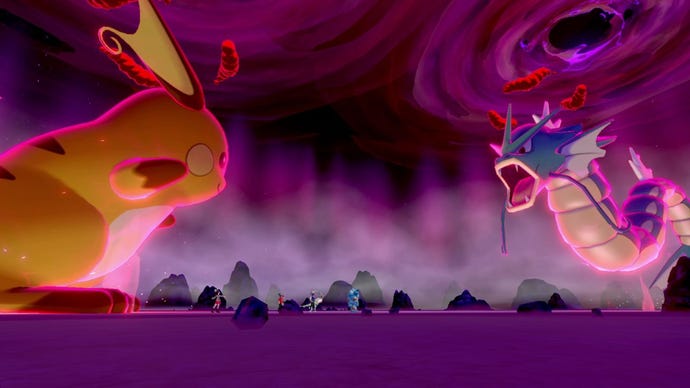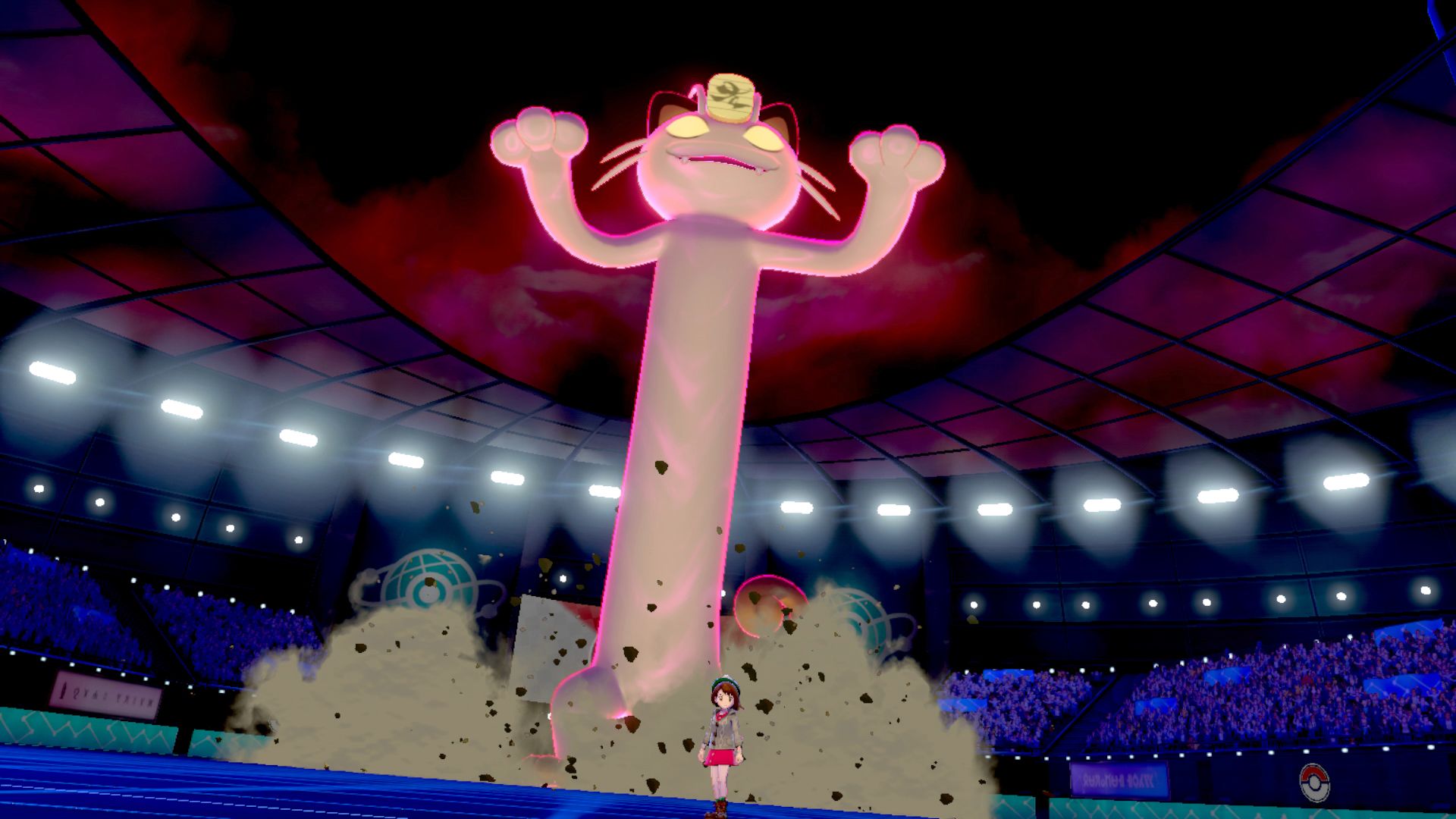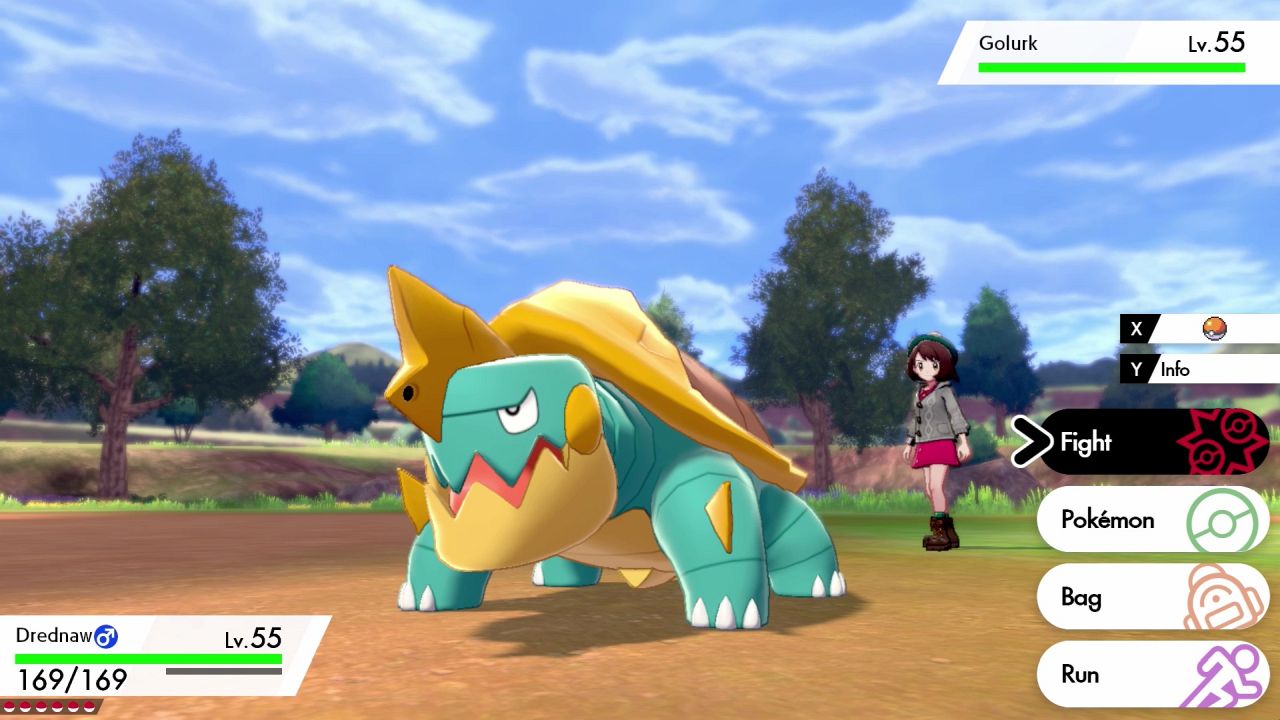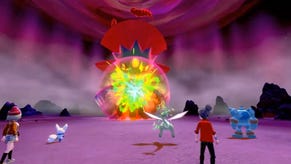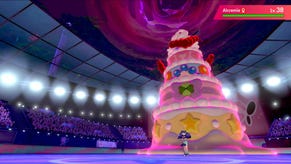The competitive Pokemon scene can’t agree on Dynamaxing, but thinks the National Dex restriction is good
With every new Pokemon game comes new changes, giving each generation its distinctive identity and heavily shaping the competitive Pokemon metagame for years to come.
The Nintendo 3DS games introduced two of the more controversial mechanics in Mega Evolutions and Z-Moves, but Pokemon Sword and Shield’s mechanic, Dynamaxing, was the straw that broke Camerupt’s back.
Smogon, the popular competitive Pokemon website, has been heating up in discussion on whether Dynamaxing should be banned from its 6v6 Singles play. In December 2019, after careful deliberation and discussion among its community, Dynamaxing was banned from its Singles 6v6 format with an overwhelming 87% pro-ban vote.
ABR is the head of Smogon’s OverUsed (OU) Council, a group of elite players who bring years of experience and insight to ensure that Smogon’s metagame runs smoothly. “I’m very cautious in banning things, but every way I looked led me to the conclusion that we couldn't keep the mechanic,” he tells me.
Finchinator is a recently retired OU Council member, and currently wears the official title of Smogon’s OU and NU (Never Used) Tier leader. “Dynamax brings countless, unpredictable possibilities that between being overpowered and limiting defensive counterplay proves to ruin the competitive metagame,” Finchinator explains.
Smogon uses a process called “Suspect Testing” in order to arrive at such decisions. The purpose of Suspect Testing is to challenge standards and conventions to see if certain bans or clauses are still in the interest of Smogon’s competitive scene. Suspect Testing is a rigorous process that involves a debating period where the community can discuss whether a certain Pokemon, move, or mechanic should be banned. Once the Suspect period is over, then qualified players can vote.
In order to vote, players need to play a minimum of 40 games on Smogon’s battle simulator, Pokemon Showdown!, in the OU ladder on an alternative account with the specific name format of “OUTM” (nickname). Additionally, players need to have a minimum score of 81 GXE, or Glicko X-Act Estimate, a rating estimate created by Smogon mathematician, X-Act. On top of that, an OU Council member or a moderator will step in to confirm the player’s stats. If you don’t know what any of this means, take this away from it: you have to know what you’re talking about to even cast a vote.
A simple 51% majority is not enough to get a certain Pokemon or mechanic banned, as it takes a minimum of 60% pro-ban majority. Needless to say, Smogon takes its competitive scene more seriously than a UK referendum.
Jonathan Evans, who was the Runner Up for 2016’s Pokemon World Championship and also placed Top 4 in 2019 at US Internationals, defended Smogon’s Suspect Testing to me, saying, “The suspect process is one of the best voting processes that I’ve seen - in part due to the subject matter. In general, voting is a good way to make decisions. Voting, combined with a sufficient debating period, allows those affected by a prospective change to voice their concerns and opinions and have an influence on the outcome of any decision.” Evans touched on Smogon’s strict voter identification system, noting that it solved one of the biggest problems which was the frequency at which insufficiently knowledgeable players would try and vote with uninformed opinions.
“Smogon’s suspect process ensures that voters not only are interested in the tier - they are forced to play a certain amount of games in the tier to vote - but also skilled, as they have to perform to a certain level within a certain time,” he continues. “This has led to most suspect tests in recent years being decided relatively uncontroversially. All of the tests I’ve participated in have had clear victors, and the results have been supported by the community. When there have been re-tests of certain Pokemon, the re-tests tend to confirm the original decision - that the Pokemon should be banned.”
ABR said that the biggest problem with Dynamax is its immense unpredictability compared to Sun and Moon’s Z-Moves: “With Z-Moves, you can deduce [which Pokemon holds a Z-Crystal] based on what it lacks, such as Leftovers and Choice items.”
Banning Z-Moves was even up for consideration when Smogon’s Sun and Moon metagame was developing. ABR notes, “I was hugely against any action taken against Z-Moves. Offensive options and flexibility are healthy when properly dosed and you don’t want an overly stale tier. So in my opinion, Z-Moves toed the line perfectly between being stable and fresh.”
Finchinator told me that Dynamax and Z-Moves are incomparable as they are entirely different mechanics. “Z-Moves are a lot easier to account for and predict as you can only use one on a specific Z item-holding Pokemon whereas Dynamax is longer lasting, secondary effect heavy, and, most importantly, can be used on any Pokemon at any time, causing counterplay to often rely on mere guesswork.”
Mega Evolutions were easier to deal with due to being much more predictable than Dynamaxing. Since Mega Evolutions were only given to a limited pool of Pokemon, players could prepare themselves better when they faced down with a Mega Evolved Pokemon. “Megas may have been strong but you at least knew which Pokemon you would be facing at team preview in 99% of cases,” explains Sage, a Smogon moderator. She adds that arguably, Dynamax takes the worst balancing parts of both Megas and Z-moves and puts them in one package.
Smogon players have tried to come up with several counterplays against Dynamaxing. One of them is using Dynamaxing itself defensively. The only reliable way to counter an opponent Dynamaxing is for the player to Dynamax as well. The double HP afforded from the transformation offers a chance for the player to stall out the opponent’s three turns during the opponent’s Dynamax. Defensively using the mechanic has some issues, however. In order to defend against an opponent’s Dynamax, the player must use it roughly around at the same time to prevent being steamrolled.
Defensive Dynamaxing can work but the predictions are heavily favored for players using it offensively. “If the opponent switches out to burn your defensive Dynamax, they can come back later to win the game with their own and you won't have the resources to stop it,” Sage elaborates. Evans adds, “In OU, if your Dynamax gets baited out you could immediately lose, and thus there were too many games where the emphasis was placed more on the individual turns and less on the game plan.”
So defensive Dynamaxing isn’t a viable tactic, but what about others? Shapeshifting Pokemon Ditto proved to be an interesting pick, its ability allowing it to transform into the opponent's Pokemon. Furthermore, Ditto also copies the stat boosts the opponent's Pokemon gained through the use of Max Moves during its Dynamax and then can Dynamax itself to pull off a devastating counter sweep, but this counter almost necessitates that Ditto take up a slot on the player’s team just for that one scenario, decreasing the overall strategy in a match.
“I think Ditto's usage shows the extreme unhealthiness when you can barely prep for anything safely without patching a Ditto into your team as a check all band-aid,” Sage admits. Finchinator agrees saying, “Using Ditto as a reliable countermeasure is embracing a poor, broken-checks-broken type of mindset and it determines games in a quick, sloppy fashion.”
Even with Dynamaxing seemingly over centralising the competitive scene, arguments came up on how to limit the mechanic rather than outright banning it. Discussion around banning Dynamax, but keep Gigantimax, a special form of Dynamax, was considered. Gigantamax Pokemon are functionally the same as Dynamax ones, except they have special attacks called G-Max moves, which have different secondary effects than regular Max Moves.
The argument for allowing only Gigantamax Pokemon is that most Pokemon who received this mechanic were far less dangerous than the worst abusers of Dynamax, such as Gyarados. Additionally, the pool of Pokemon that could Gigantamax was significantly smaller so it was much easier to predict. ABR compares Gigantamaxing to something more akin to Mega Evolutions: “I was originally a supporter of the separate Gigantamax tiering, because it preserved the core mechanic in some way and sort of gave a Mega Evolution like feel where you could deduce [who the Gigantamax Pokemon is] based on Team Preview and it's something mostly set in the builder.”
However, most players thought that it was just an arbitrary separation. “Separating the two is nonsense,” Finchinator states. “In the game, the same mechanism is used for both and the only practical difference is the name. Tiering them separately would distance us from actual Pokemon and is not something we deemed acceptable at any point.” Others thought that allowing only Gigantamax would just over centralise the metagame. Sage argues, “It turns Gigantimax into a limited resource that only a select few Pokemon can use and this would create extreme centralisation around those best Pokemon - likely Gengar, Copperajah, Corviknight, and Hatterene - where teams are just built around supporting or stopping these massive threats.”
Another argument was to ban specific abusers of Dynamax. However, this debate was pretty much shot down unanimously, as many players agreed that the problem lay with Dynamaxing itself, not the specific Pokemon. Sage expanded further, saying, “I think it is clear that the Dynamax mechanic itself is what is making all these Pokemon problematic and that trying to patch out each abuser would create a far too volatile metagame where something will always be abusing it the most compared to whatever is left.”
Smogon places emphasis on simple rules and bans. When players read the rules, they should be able to understand why a Pokemon is banned, and not just specific combinations of Pokemon, abilities, and moves.
The last prevailing topic around Dynamaxing was that banning the core mechanic would strip the 8th generation of games its unique identity. Generation 6 was defined by Mega Evolutions, and Generation 7 introduced Z-Moves. ABR was receptive to this point of view, wanting to adhere closely to the cartridge when possible.
Sage provides another angle of how the newest games came to define itself, however: “Other generations have been fine without a gimmick, and Generation 8 already has an identity with the massive Pokemon/Movepool cuts that ‘Dexit’ gave us.” She also mentions how having the National Dex would be even worse. Old metagame threats from previous generations such as Landorus and Kartana having the ability to Dynamax would be troublesome, and in addition to having a Mega Evolution and a Z-Move user would just result in overwhelming power creep.
While Dynamaxing has been banned from the most popular competitive Pokemon fan community, the mechanic is alive and well in the Video Game Championships, created by the Pokemon Company. The VGC format is a double battle, where players bring six Pokemon, and choose four to participate in battle. Alex Underhill, who won the 2018 Fort Wayne Regional Championship and 2017 Collinsville Regional Championship, tells me that the VGC environment seems to be where the balancing of Dynamax was focused.
“We typically have 8-turn battles, and so you can better anticipate when a Dynamax might come out based on the needs of your opponent. You have to be careful in VGC not to just waste your Dynamax on a Pokemon that could be eating two very strong attacks from the opposing Pokemon that turn.”
Aaron ‘Cybertron’ Zheng also has similar sentiments, saying, “I think Dynamax is pretty balanced in VGC so teams are less focused on countering the effect itself and more focused on being as well rounded as possible.” Zheng has won numerous VGC regional and national championships, and reached third place at the Worlds level in 2013.
“I like Dynamax a lot in VGC because you don't need to use it for pure offense; using it defensively is a common strategy,” Zheng explains.
“I think defensive Dynamaxing is a great concept, one of its best uses,” Underhill agrees. “We already see players using it to [survive] a hit a Pokemon could not otherwise, or seeing Pokemon like Excadrill use its STAB Max moves of Steel and Ground to boost the Defense and Special Defense of its team, respectively.”
Zheng also enjoys Dynamax in VGC much more than Mega Evolutions and Z-Moves. “Megas weren't great because some were just so much better than the rest.” While he is indifferent towards Z-Moves, he dislikes how strong some are, “Terrains were really common in VGC, so things like Electrium Z Tapu Koko and Psychium Z Tapu Lele really were able to nuke Pokemon.”
Underhill thinks that Dynamaxing in VGC is overall a bit more balanced compared to Mega Evolutions and Z-Moves.“Z-moves were a one turn burst, that could be so unpredictable to the point of frustration. Megas were much easier to anticipate thanks to Team Preview.”
Additionally, the removal of the National Dex seems to have had an impact on VGC. Underhill elaborates, “The National Dex restriction is part of what is making VGC balanced as it is. It is allowing certain Pokemon that never saw the light of day to shine now, like Butterfree.”
Zheng agrees, stating, “Definitely - part of why Dynamax feels balanced in VGC is because there aren't really any Pokemon this early in the metagame that can abuse it way more than everyone else. I'm not sure this would still be the case if all Pokemon were in the game.”
Whether in VGC or Smogon, the Dynamax mechanic has definitely been the biggest focus in competitive scenes. Each scene has its own audience to focus on, and exciting developments will follow in both formats. “Dynamax allowing any Pokemon to change the tide of battle is interesting, and I think it'll make for a year of VGC unlike any other before it,” Underhill shares excitedly.
A minority of players may be upset about certain bans, but Evans explains that it will always be the case, “Smogon’s tiering process has its detractors from outside the community, and some within the community think that too few things get banned. However, the process is well founded and produces good results and fun formats.”
